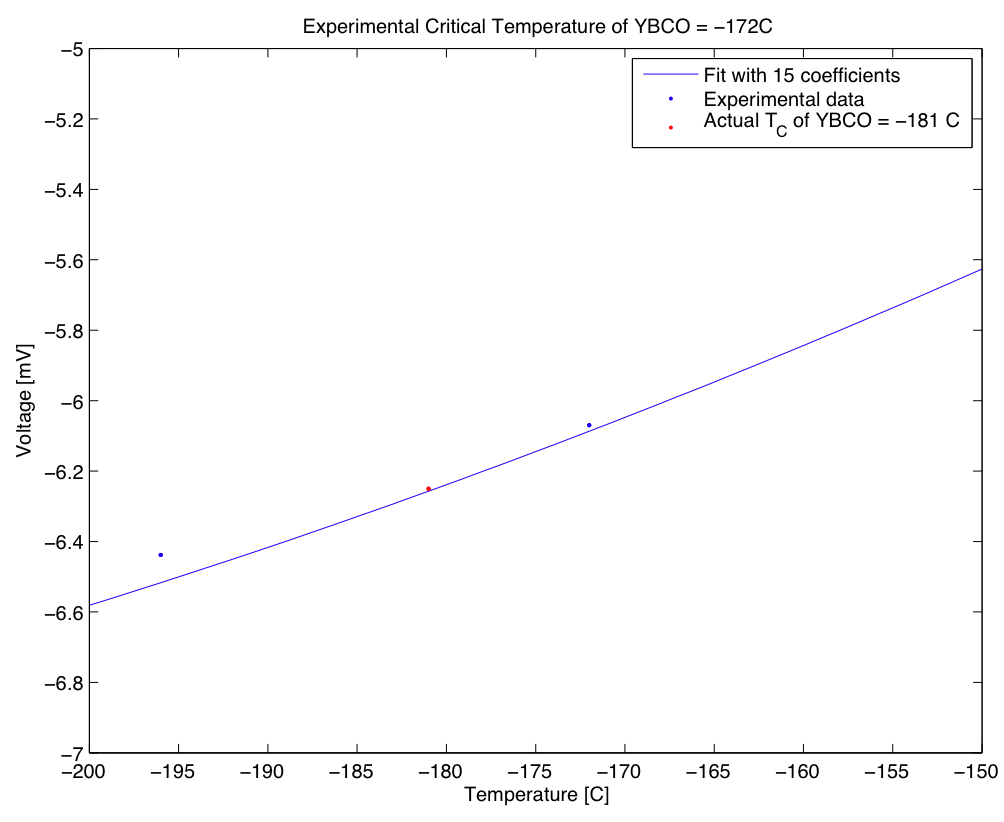Lab #11 Superconductors


Conceptual goal: Understand the difference between a perfect conductor and a superconductor.
Modeling goal: Further the students’ understanding of the interplay between theory, modeling, and experiment (what happens when a model does not fit the experimental results? Is the theory wrong? Is the model too simple?).
Experimental goal: Use of a thermocouple.
Computational goal: Plotting, use of polynomial fits.
The Meissner effect relates to the fact that a superconductor will expel all magnetic fields by developing a surface current. A magnet will levitate above a superconductor cooled below its critical temperature. As the superconductor’s temperature rises, superconductivity is gradually lost until, at the critical temperature, the levitating magnet comes to rest on the superconductor’s surface. Students use the Meissner effect, along with a thermocouple (that was calibrated in the previous laboratory) to measure the critical temperature of YBCO. For the experiment, we use Colorado Superconductor's kits.
A Matlab simulation to accompany this experiment is under development.
